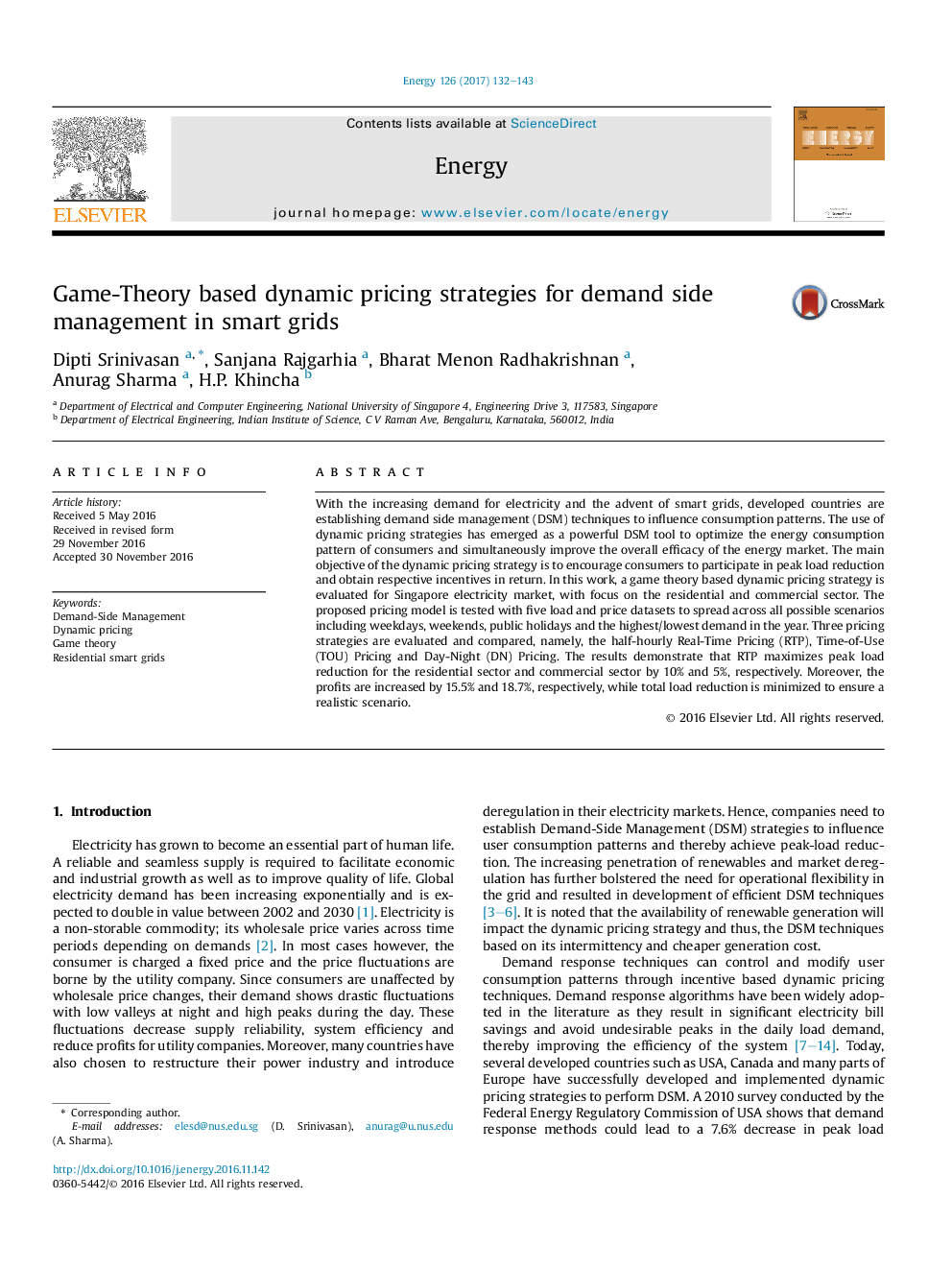| Article ID | Journal | Published Year | Pages | File Type |
|---|---|---|---|---|
| 5476973 | Energy | 2017 | 12 Pages |
Abstract
With the increasing demand for electricity and the advent of smart grids, developed countries are establishing demand side management (DSM) techniques to influence consumption patterns. The use of dynamic pricing strategies has emerged as a powerful DSM tool to optimize the energy consumption pattern of consumers and simultaneously improve the overall efficacy of the energy market. The main objective of the dynamic pricing strategy is to encourage consumers to participate in peak load reduction and obtain respective incentives in return. In this work, a game theory based dynamic pricing strategy is evaluated for Singapore electricity market, with focus on the residential and commercial sector. The proposed pricing model is tested with five load and price datasets to spread across all possible scenarios including weekdays, weekends, public holidays and the highest/lowest demand in the year. Three pricing strategies are evaluated and compared, namely, the half-hourly Real-Time Pricing (RTP), Time-of-Use (TOU) Pricing and Day-Night (DN) Pricing. The results demonstrate that RTP maximizes peak load reduction for the residential sector and commercial sector by 10% and 5%, respectively. Moreover, the profits are increased by 15.5% and 18.7%, respectively, while total load reduction is minimized to ensure a realistic scenario.
Related Topics
Physical Sciences and Engineering
Energy
Energy (General)
Authors
Dipti Srinivasan, Sanjana Rajgarhia, Bharat Menon Radhakrishnan, Anurag Sharma, H.P. Khincha,
